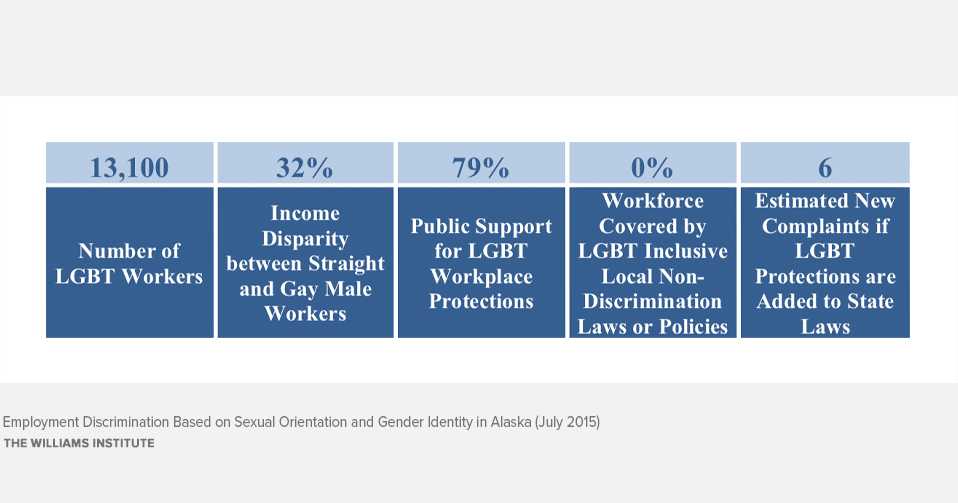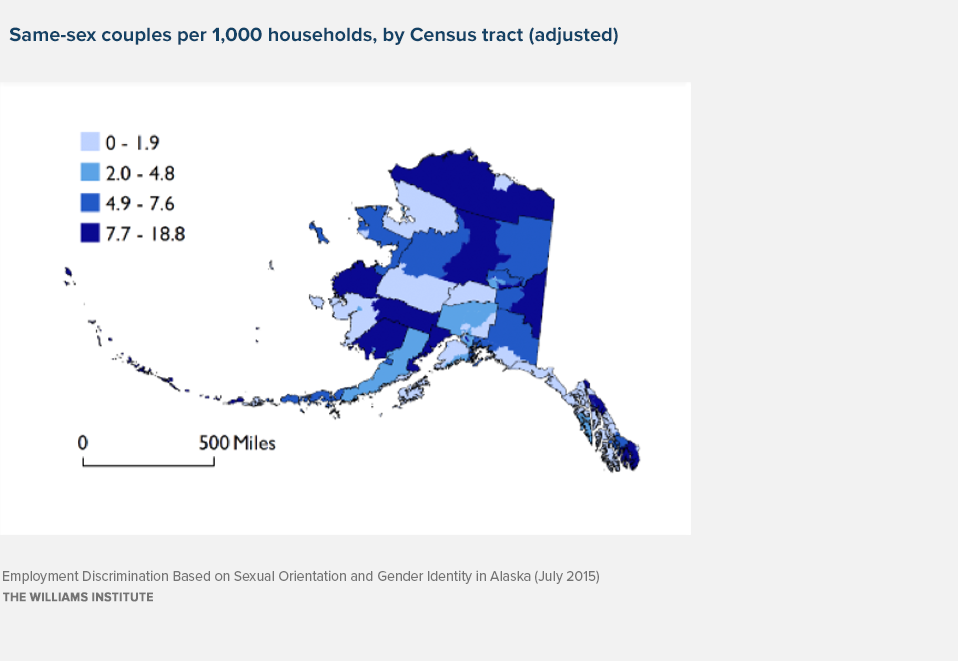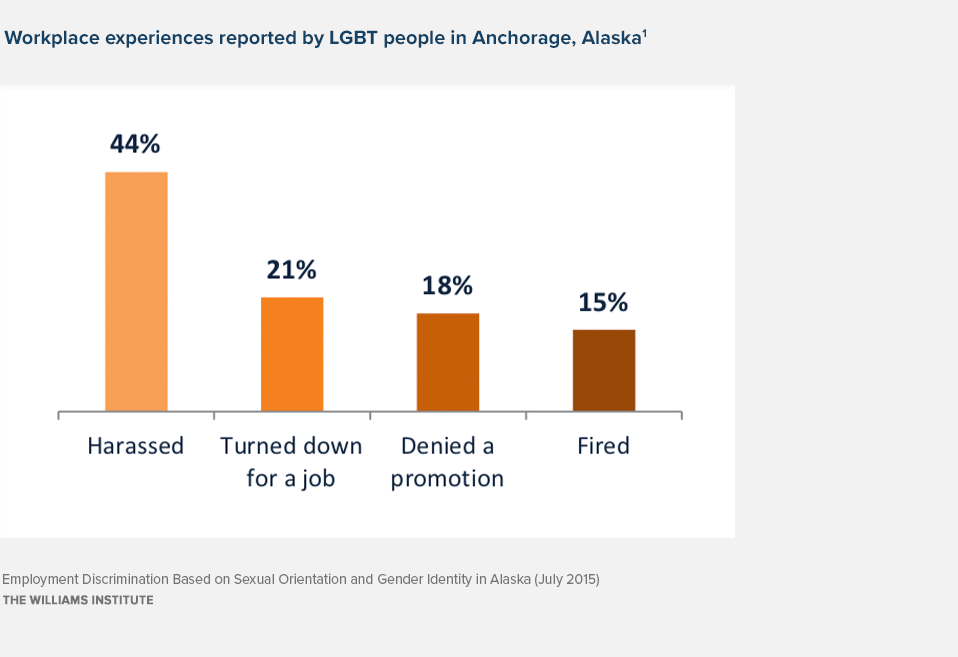Executive Summary
More than 4% of the American workforce identifies as lesbian, gay, bisexual, or transgender (LGBT). Approximately 13,100 of these workers live in Alaska. Alaska does not have a statewide law that prohibits discrimination based on sexual orientation or gender identity in employment.
This report summarizes evidence of sexual orientation and gender identity employment discrimination, explains the current limited protections from employment discrimination based on sexual orientation and gender identity in Alaska, and estimates the administrative impact of passing a law prohibiting employment discrimination based on these characteristics in the state.


